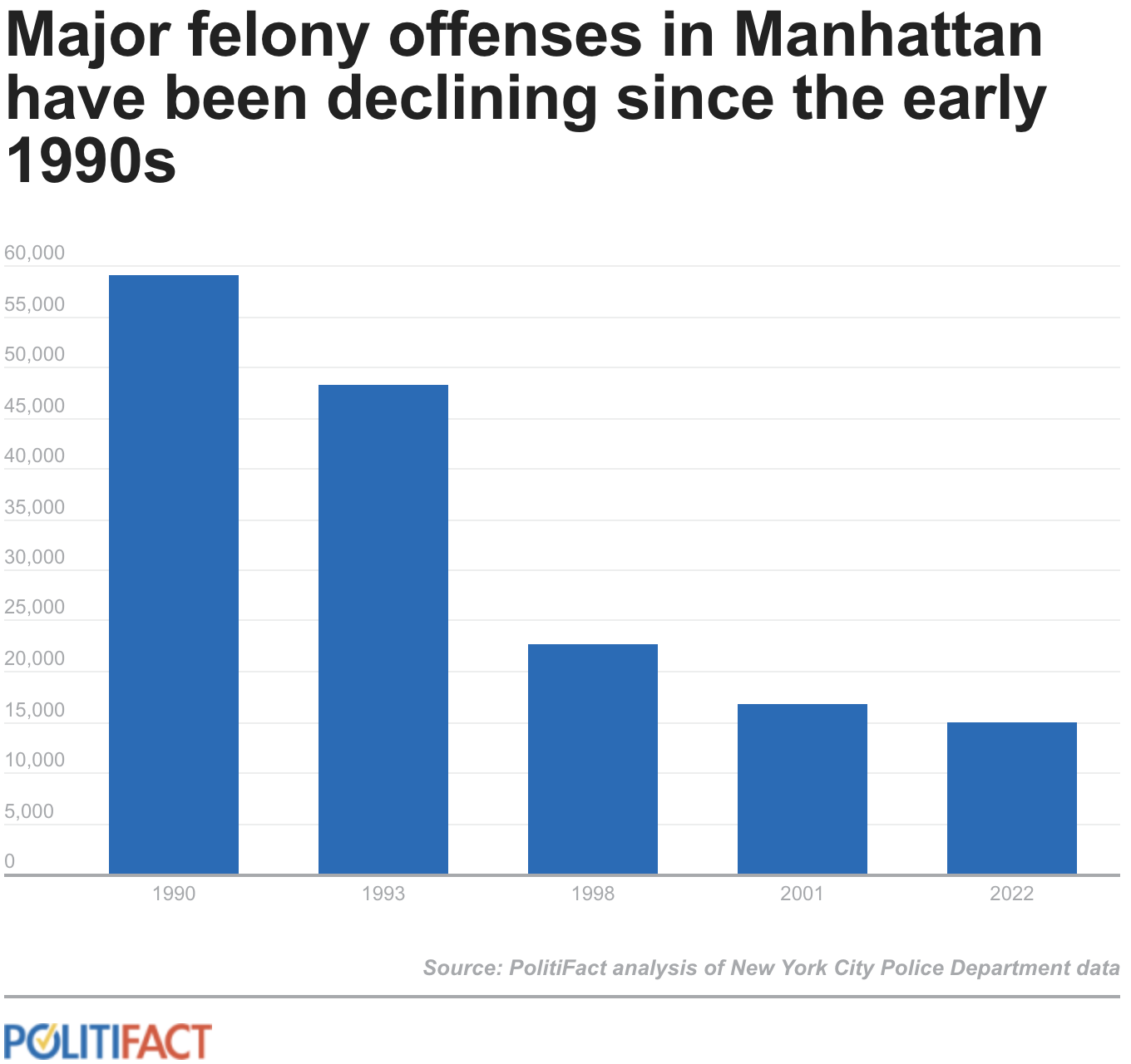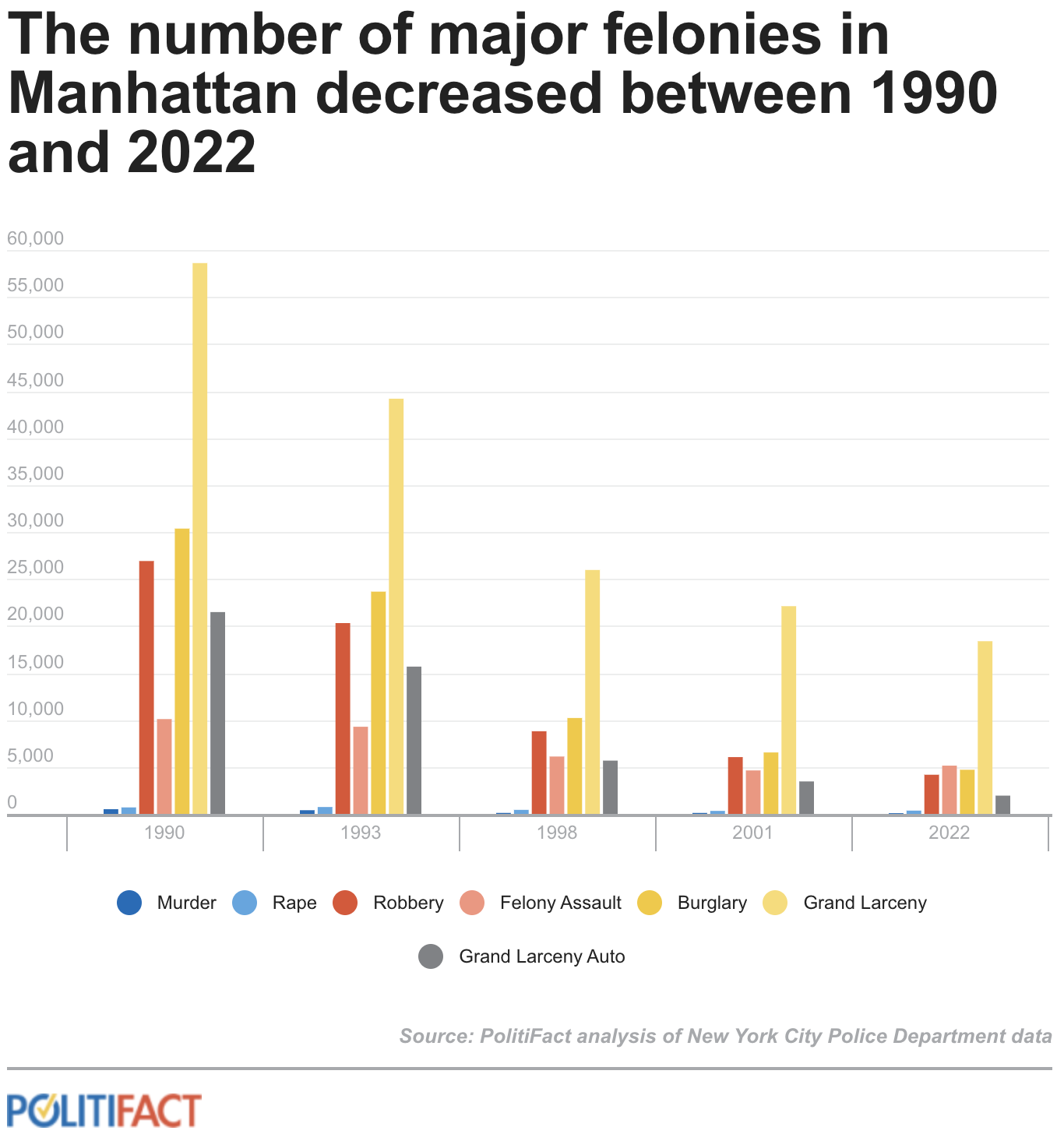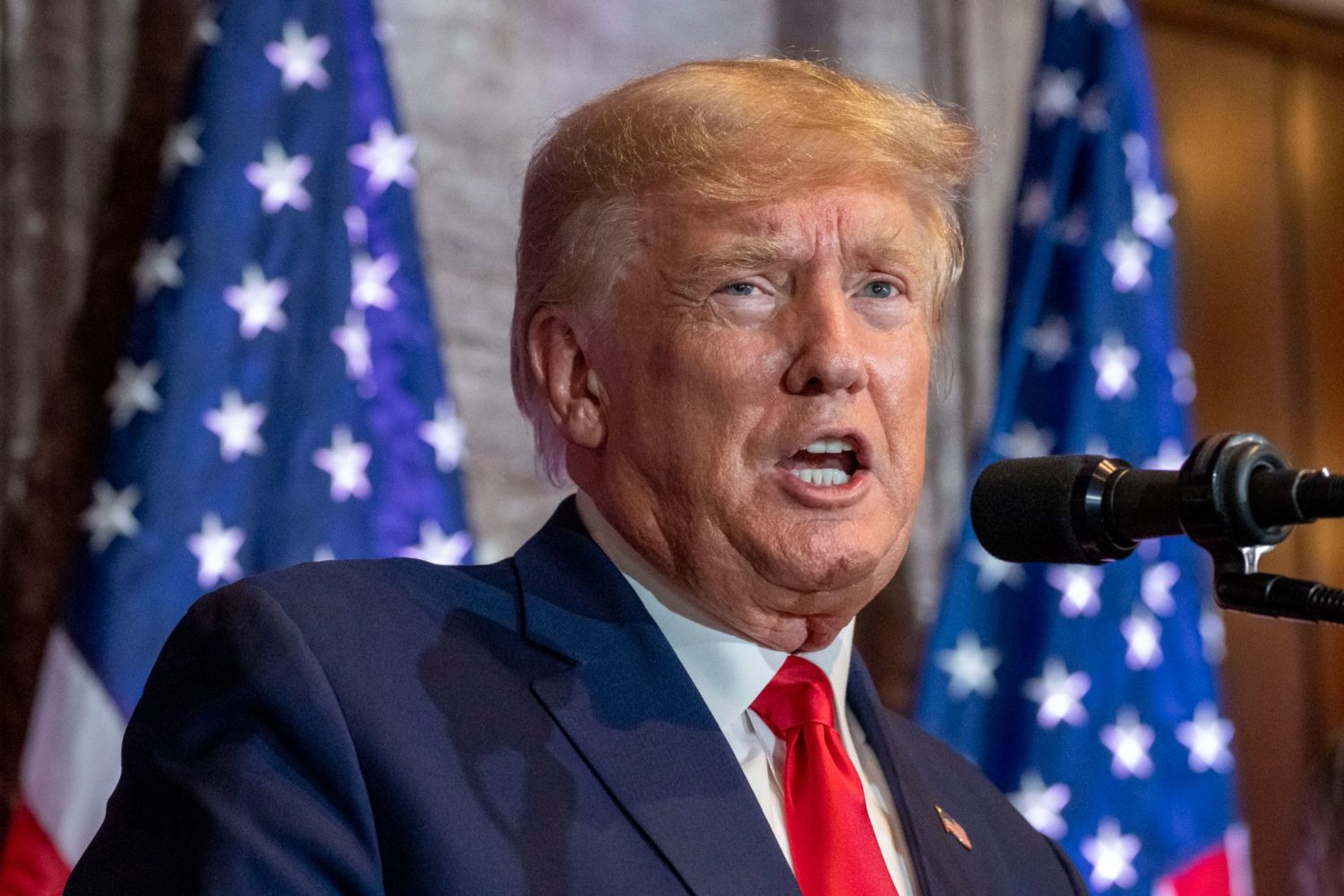As he awaits a possible indictment in New York City, former President Donald Trump has taken to his social media platform, Truth Social, to preemptively criticize Manhattan District Attorney Alvin L. Bragg. Trump wrote that Bragg should focus on Manhattan’s crime levels rather than “getting Trump.”
Bragg “doesn’t care about the violent and vicious crimes being committed in Manhattan, which are now at a RECORD LEVEL,” Trump wrote in the March 4 post.
Other Republicans echoed Trump’s claim about crime statistics in New York City.
“What we’ve seen in Manhattan is we’ve seen the crime rate go up, and we’ve seen citizens become less safe,” Florida Gov. Ron DeSantis, who may run against Trump for the GOP presidential nomination, said in a press conference March 20.
Former Vice President Mike Pence, another possible White House contender, also referred to a “crime wave” in Manhattan as he denounced the case in a recent interview with ABC News.
Are violent crime levels in Manhattan at record highs? New York City Police Department data don’t back him up. Crime peaked in the 1990s.
“President Trump’s claim that violent crimes are at a record level in Manhattan is clearly false,” Lyndsay Boggess, a criminology professor at the University of South Florida, told PolitiFact.
The FBI classifies violent crime as “offenses that involve force or threat of force” these include homicide, rape, robbery, aggravated assault, burglary, larceny-theft and motor vehicle theft. The New York City Police Department classifies these seven crimes as “major felony offenses.”
The police department publishes annual citywide data going back to 2000 as well as borough-specific historical crime data from 1990, 1993, 1998, 2001 and 2022.
Our review of this data for Manhattan — the borough in Bragg’s purview — found the total number of major felony offenses in 2022 were lower than in each of the other four available years.
In 2022, the department reported about 34,000 felony offenses in Manhattan. That’s far fewer than the nearly 150,000 in 1990.

(PolitiFact)
Five of the seven major felony categories dropped consistently from 1990 to 2022. Rape and felony assault saw an increase in 2022 compared with 2001. However, both felonies were still below the figures for the 1990s.

(PolitiFact)
To date, felony assaults in 2023 have swung upward from the same period in 2022. In February, there were about 1,007 felony assaults in Manhattan — about an 11% increase from February 2022.
Still, from a historical perspective, the number of such crimes in 2023 is nowhere near a record-breaking pace when compared with 1990.
The decline in violent crime cannot be explained by a plunging population, either. Since 1990, Manhattan’s population has grown by about 100,000 residents, which means that the per capita rate of such crimes was even higher in 1990 than the raw crime statistics would show.
Boggess said “year-to-date comparisons” are not the “best way” to measure crime trends over time. Total felony offenses in February were down nearly 6% when compared to last year.
Our ruling
Trump said violent crime in Manhattan is “now at a record level.”
NYPD data doesn’t back him up. Violent crimes, including murder, rape and felony assault in Manhattan peaked in the 1990s and have fallen fairly consistently since.
Felony assaults and murders in 2023 in Manhattan have swung upward from the same period in 2022. But even with this increase, the volume of such crimes is still far lower than it was in the record-breaking period of the late 1990s.
We rate Trump’s claim False.
This fact check was originally published by PolitiFact, which is part of the Poynter Institute. See the sources for this fact check here.








